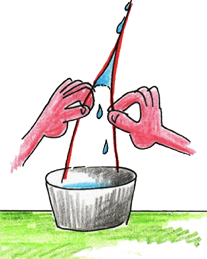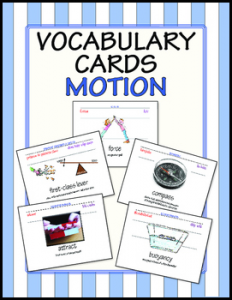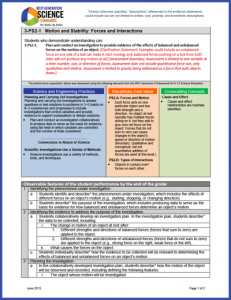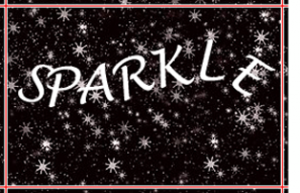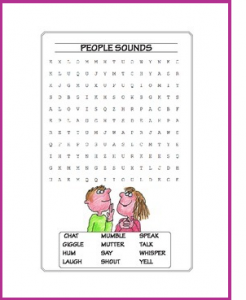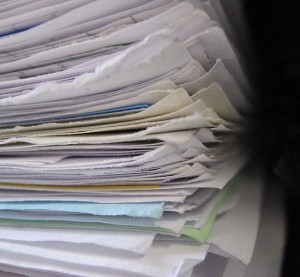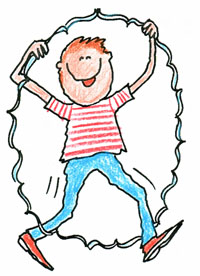It’s 1985 and I’m a “new to science” teacher. The principal and the parents haven’t expected me to teach science, just the basics, so that’s what I’ve been doing. Then a life changing event occurs. Marie came to see me to talk about her son and offered to teach anatomy. Sure, I’m not teaching science, why not let her? Students who couldn’t pass a spelling test learn how to spell the muscles she was explaining. (Did you know the levator anguli oris, levator labii superioris, orbicularis oculi, risorius, zygomaticus major, and zygomaticus minor make it possible for you to smile?) Students who couldn’t focus in my lessons focus during hers. I …
While teaching a university class, my teacher participants asked me about strategies for learning new science vocabulary. What resources could be used to help students learn key words for a new science topic? I created a set of cards for a variety of topics that have an image, a simple definition in English, and the term in English, Spanish, Vietnamese, and Russian. You can choose from: astronomy, birds, wild cats, frogs, geology, insects, motion, weather, and whales. Consider these other resources: Increasing vocabulary is an accomplishment. Celebrate mastery of every word!– Marilee Sprenger in Education Week Teacher Rigorous and meaningful vocabulary activities can …
Do you find a page from NGSS with several standards and the Science and Engineering Practices, and the Disciplinary Core Ideas, AND the Crosscutting Concepts all on one page to be a bit overwhelming?? Consider downloading the Evidence Statements. What are Evidence Statements? They are resources you’ll find at the Next Generation Science Standards web site.          In the pages shown above, you can see four physical science standards from third grade are saved on four different pages. Notice the grey boxes at the bottom of each page? That’s the  “Observable features of the student performance by …
Students in one of my classes are learning fractions so we’re playing Fraction Bingo. Bingo makes it fun for students practice a math skill. Visit Simply Math to find a variety of bingo games that your students will look forward to playing as they practice their math skills. Print the cards, cut squares of scrap paper, and then put both in a zip bag. Students keep their bingo bags in their desks so they can play when there’s just a few minutes to play one game. It’s the “If we finish our work and we’ve done it carefully we can play a game of bingo” approach. It can be a …
How can we support students who may be frustrated with spelling while keeping it fun for the students who find spelling to be very easy? Each week, for my fourth and fifth grade students, I would assign 10 of the 200 most commonly misspelled words. I put the tricky homophones together, like one week was to, two, and too and another week was there, their, and they’re. If I didn’t put them together on the list, it would become “This is the week for two Os in too.” We took a pretest Monday and shared strategies for knowing how to spell words that sound …
A fun way to help students learn how to spell science terms is with seek-a-word puzzles. To get you started, try these FREE WORD PUZZLES from my Simply Science store, including: five senses people make sounds animals make sounds weather volcanoes layers of the Earth butterflies cells bones muscles circulatory system I’m still adding seek-a-word puzzles so check back often to see what’s new in my store. Let me know if you have a topic (and a list of terms) that you want me to add to the Simply Science store. To create your own puzzles, visit Discovery Education where you’ll find an easy puzzle maker. …
Here is a list of poetry by Shel Silverstein to consider adding to your resources for teaching about force and motion unit. These could support activities that meet NGSS 3-PS2-1♦ and 3-PS2-2â—Š. A Light in the Attic, Shel Silverstein force: “ADVENTURES OF A FRISBEE” inertia: “FANCY DIVE” pendulums: “HOW TO MAKE A SWING WITH NO ROPE OR BOARD OR NAILS” Every Thing On It, Shel Silverstein gravity: “THE JUGGLER” gravity: “TURNING INTO” gravity: “GOOD IDEA” gravity: “LOVE IS GRAND BUT…” Falling Up, Shel Silverstein buoyancy: “SOMETHIN’ NEW” gravity: “FALLING UP” Where the Sidewalk Ends, Shel Silverstein buoyancy: “HOMEMADE BOAT” friction: “MAGICAL ERASER” …
No teacher wants a stack of papers on the desk waiting to be graded days after the assignment or assessment was given. Students need feedback and you need information to guide you as you plan the next lesson. One simple suggestion – make a pattern in the answers! Have students grade their own papers. Because you have a pattern in the answers – they won’t know it but you will – you can walk around checking answers as students volunteer the correct answers for the assessments. Here’s a couple of examples. In my TPT products for introducing frogs, birds, bugs, whales, …
There are many fun poems you can use to enrich science with language arts. You might have students illustrate a poem you’ve found, choose one to share with classmates or family members, or write a new poem that can be shared with all future classes – kids love thinking their work will be added to your resources and used again and again as you teach the topic. In future posts, I’ll share poems I found written by familiar poets like Jack Prelutsky, Jeff Moss, and Shel Silverstein that you can use to teach topics like force, motion, light, and sound. You might also find these resources useful: Ten …
Do you have a pile of scrap paper, scissors, and a few minutes for a quick science demonstration? Challenge students to figure out a way to walk through the paper. If you have any students familiar with the activity caution them to explain after the demonstration. They might have a variation to share like a spiral cut or be able to help classmates with the activity! Fold a sheet of paper in half along the dashed line and then make the vertical cuts along the solid lines. Cut the center section of the fold itself along the heavy solid line. …
